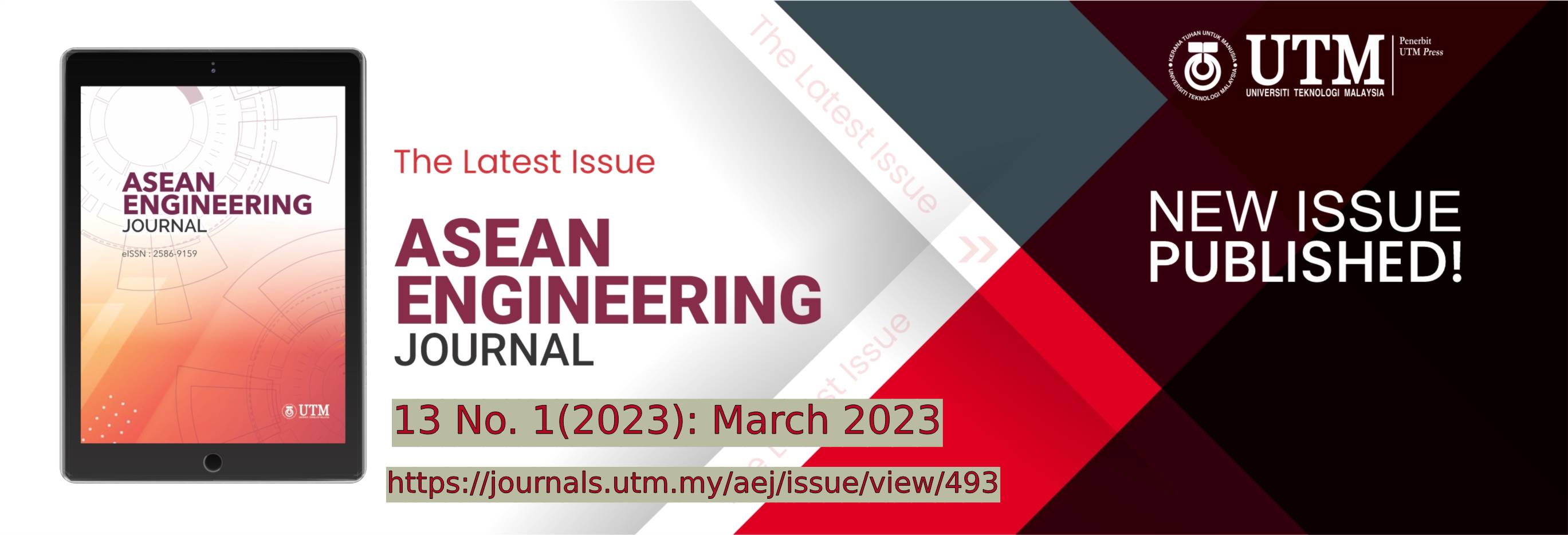HAND RECOGNITION SYSTEM BASED ON ELECTROMYOGRAPHY FOR REAL-TIME HAND PROSTHETIC CONTROL
DOI:
https://doi.org/10.11113/aej.v13.18641Keywords:
upper limb, hand prosthesis, Hand Posture, Electromyography, Pattern recognitionAbstract
Upper limb amputation is a significant limitation for achieving routine activities. Myoelectric signals detected by electrodes well-known as Electromyography (EMG) have been targeted to control upper limb prostheses of such lost limbs. Unfortunately, the acquisition, processing and use of such myoelectric signals are sophisticated. Furthermore, it necessarily requires complex computation to fulfil accuracy, robustness, and time-consumption execution for the real-time prosthesis application. Thus, machine learning schemes for pattern recognition are a potential approach to improve the traditional control for hand prostheses due to the movement of users and muscle contraction. This paper presents real-time hand posture recognition based on three hand postures using surface EMG (sEMG) signals. sEMG signals are acquired by the electrode channel and simultaneously collected while making a hand posture. Performance evaluation relies on classification accuracy and time consumption. The performance of six real-time recognition models is evaluated which combine two projection techniques and three classifiers. Results indicate that EMG-based pattern recognition (EMG-PR) control outperforms the traditional control for hand prostheses in real-time application. The highest classification accuracy is approximately 96%, whereas the lowest time consumption is 4 ms. In addition, the accuracy is dropped when the number of electrodes decreases nearly to 3%. These outcomes can apply to real-time hand prostheses to alleviate the limited prostheses available.
References
Igual, C., Pardo, L. A., Hahne, J. M., Igual, J., 2019 “Myoelectric control for upper limb prostheses,” . Electronics. 8(11): 1244 doi: 10.3390/electronics8111244.
Geethanjali, P., 2016. “Myoelectric control of prosthetic hands: State-of-the-art review,” Medical Devices: Evidence and Research. doi: 10.2147/MDER.S91102.
Parajuli, N., Sreenivasan, N., Bifulco, P., Cesarelli, M., Savino, S., Niola, V., Esposito, D., Hamilton, T. J., Naik, G. R., Gunawardana, U., Gargiulo, G. D., 2019 “Real-time EMG based pattern recognition control for hand prostheses: A review on existing methods, challenges and future implementation,” Sensors (Switzerland). 19(20): 4596. doi: 10.3390/s19204596.
Sattar, N. Y., Syed, U. A., Muhammad, S., Kausar, Z., 2019 “Real-time EMG signal processing with implementation of PID control for upper-limb prosthesis,”. International Conference on Advanced Intelligent Mechatronics (AIM) :120-125 doi: 10.1109/AIM.2019.8868796.
Krasoulis, A., Kyranou, I., Erden, M. S., Nazarpour, K., Vijayakumar, S., 2017, “Improved prosthetic hand control with concurrent use of myoelectric and inertial measurements,” Journal of Neuro Engineering and Rehabilitation. 14(71): 1-14 doi: 10.1186/s12984-017-0284-4.
Pradhan, A., He, J., Jiang, N., 2021, “Performance Optimization of Surface Electromyography Based Biometric Sensing System for Both Verification and Identification,” IEEE Sensors Journal. 21(19): 21718-21729. doi: 10.1109/JSEN.2021.3079428.
Hameed, H. K., Hassan, W. Z. W., Shafie, S., Ahmad, S. A., Jaafar, H., 2020. “A Review on Surface Electromyography-Controlled Hand Robotic Devices Used for Rehabilitation and Assistance in Activities of Daily Living,” Journal of Prosthetics and Orthotics. 32(1): 3-13 doi: 10.1097/JPO.0000000000000277.
Li, G., 2011. “Electromyography Pattern-Recognition-Based Control of Powered Multifunctional Upper-Limb Prostheses,” in Advances in Applied Electromyography, 6. London, United Kingdom. doi: 10.5772/22876.
Li, W., Shi, P., Yu, H., 2021. “Gesture Recognition Using Surface Electromyography and Deep Learning for Prostheses Hand: State-of-the-Art, Challenges, and Future,” Frontiers in Neuroscience. 15: 621885. doi: 10.3389/fnins.2021.621885.
Prakash, A., Sharma, S., 2021, “Single-channel surface electromyography (sEMG) based control of a multi-functional prosthetic hand,” Instrumentation Science & Technology. 49(4): 428-444 doi: 10.1080/10739149.2021.1880933.
Mohammadi, A., Lavranos, J., Choong, P., Oetomo, D., 2019. “X-limb: A soft prosthetic hand with user-friendly interface,” in Biosystems and Biorobotics, 21: 82-86. doi: 10.1007/978-3-030-01845-0_16.
Llop-Harillo, I., Pérez-González, A., Starke, J., Asfour, T., 2019, “The Anthropomorphic Hand Assessment Protocol (AHAP),” Robotic and Autonomous Systems. 121: 103259, doi: 10.1016/j.robot.2019.103259.
Abbasi, B., Noohi, E., Parastegari, S., Zefran, M., 2016. “Grasp taxonomy based on force distribution,” 2016 25th IEEE International Symposium on Robot and Human Interactive Communication (RO-MAN), New York, NY, USA, pp. 1098-1103. doi: 10.1109/ROMAN.2016.7745245.
Nielsen, J. L. G., Holmgaard, S., Jiang, N., Englehart, K. B., Farina, D., Parker, P. A., 2011, “Simultaneous and proportional force estimation for multifunction myoelectric prostheses using mirrored bilateral training,” IEEE Transactions on Biomedical Engineering, 58(3): 681-688, doi: 10.1109/TBME.2010.2068298.
Farrell, T. R., Weir, R. F., 2007, “The optimal controller delay for myoelectric prostheses,” IEEE Transactions on Neural Systems and Rehabilitation Engineering, 15(1): 111-118, doi: 10.1109/TNSRE.2007.891391.
Zhang, W., Shuai, L., Kan, H., 2021. “Real-time Gesture Recognition Based on Improved Artificial Neural Network and sEMG Signals,” 2021 IEEE International Conference on Mechatronics and Automation (ICMA), Takamatsu, Japan, 981-986. doi: 10.1109/ICMA52036.2021.9512756.
Liu, Y. H., Huang, H. P., 2009. “Towards a high-stability EMG recognition system for prosthesis control: A one-class classification based non-target EMG pattern filtering scheme,” 2009 IEEE International Conference on Systems, Man and Cybernetics, San Antonio, TX, USA, 4752-4757, doi: 10.1109/ICSMC.2009.5346086.
Sae Jong, N., Phukpattaranont, P., 2019, “A speech recognition system based on electromyography for the rehabilitation of dysarthric patients: A Thai syllable study,” Biocybernetics and Biomedical Engineering, 39(1): 234-245 doi: 10.1016/j.bbe.2018.11.010.
Anam, K., Al-Jumaily, A., 2015. “A novel extreme learning machine for dimensionality reduction on finger movement classification using sEMG,” 2015 7th International IEEE/EMBS Conference on Neural Engineering (NER), Montpellier, France, 824-827, doi: 10.1109/NER.2015.7146750.
Li, M., Wibowo, S., Li, W., Li, L. D., 2021, “Quantitative spectral data analysis u18sing extreme learning machines algorithm incorporated with pca,” Algorithms, 14(1):. doi: 10.3390/a14010018.
Jong, N. S., De Herrera, A. G. S., Phukpattaranont, P., 2021, “Multimodal Data Fusion of Electromyography and Acoustic Signals for Thai Syllable Recognition,” IEEE Journal of Biomedical and Health Informatics, 25(6): 1997-2006 doi: 10.1109/JBHI.2020.3034158.
















